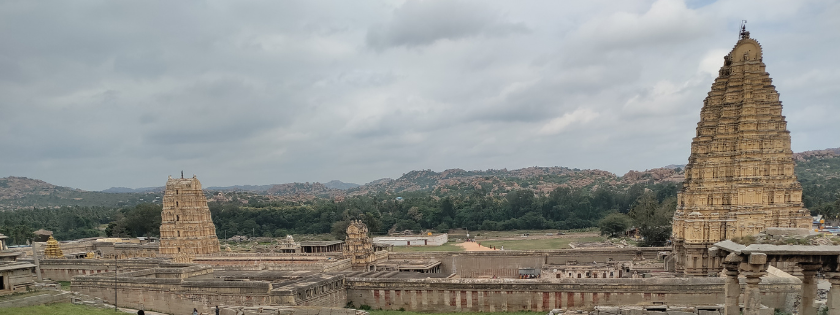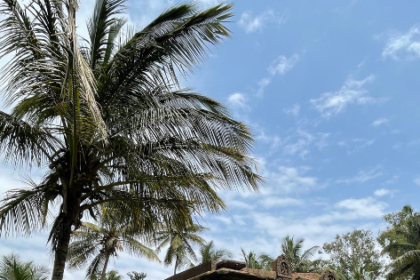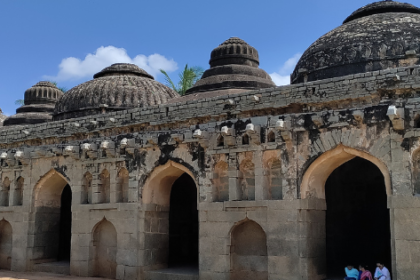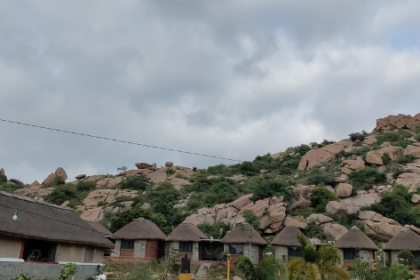To read the previous blog on Hampi-Badami Day-3 click here
Day 4: Discovering Hampi’s Majesty
Hampi’s allure lies in its mystical landscapes dotted with ancient temples and ruins. We began at the Virupaksha Temple. Since we went on a long weekend, it was extremely crowded. As I had a pet along and it becomes unmanageable in such a huge crowd, I decided to skip going inside the Virupaksha temple. So we went on the adjacent Hemakuta Hill and got a clear, closer and better view of the Virupaksha temple.
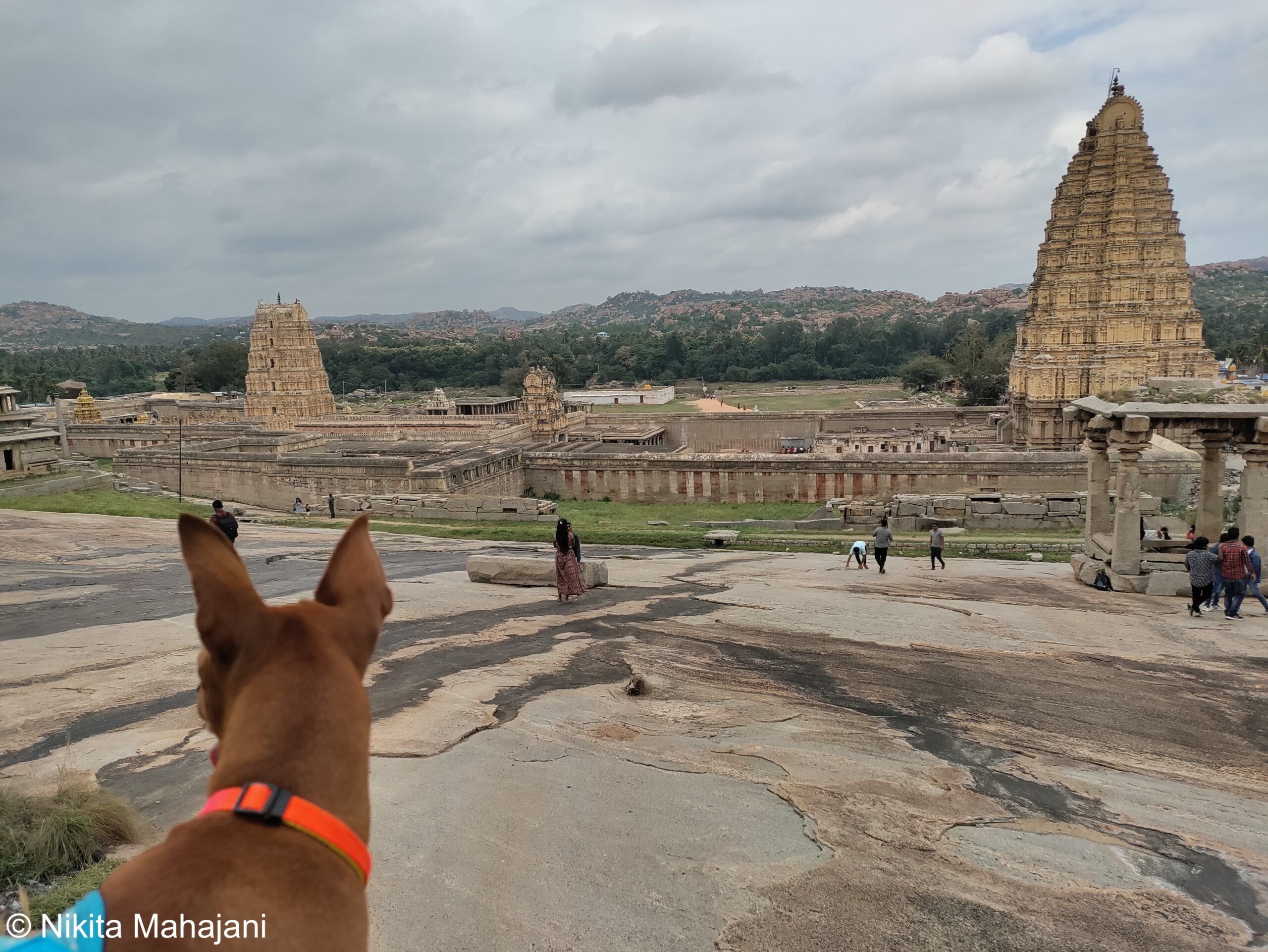
The Virupaksha Temple is one of the oldest and most sacred temples in India. Over 1000 years old, it is dedicated to Lord Shiva in his form as Virupaksha, meaning “formless eyes.”What began as a small shrine in the 7th century grew into a grand temple complex under the Vijayanagara Empire. Its towering gopuram seems to touch the sky, and today, it is a UNESCO World Heritage Site. A major pilgrimage site, the temple attracts devotees and travelers alike. It’s a must-visit when exploring the wonders of Hampi.
Hemakuta Hill is one of Hampi’s most serene and magical spots to witness a stunning sunset. It is a massive rocky boulder. There is no entry ticket and its pet friendly. This tranquil location beautifully blends history, mythology, spirituality, and nature, making it an ideal place to pause and reflect during your trip.
Just 250 meters from a large parking area, you’ll be greeted by a massive idol of Lord Ganesha at the entrance. From there, it’s a short 300–400 meter walk across ancient boulders to reach the sunset point. On weekends, you’ll find 50 to 100 people gathered here, all quietly soaking in the view as the sun dips below the horizon. Local authorities are usually present to maintain safety and order.
Scattered across the hill are more than 35 small temples—each whispering stories of the past. According to legend, this is where Lord Shiva performed penance before marrying Pampa. Moved by her devotion, he agreed to marry her, and in celebration, it is said that gold rained upon this hill—hence the name Hemakuta, with “hema” meaning gold in Sanskrit.
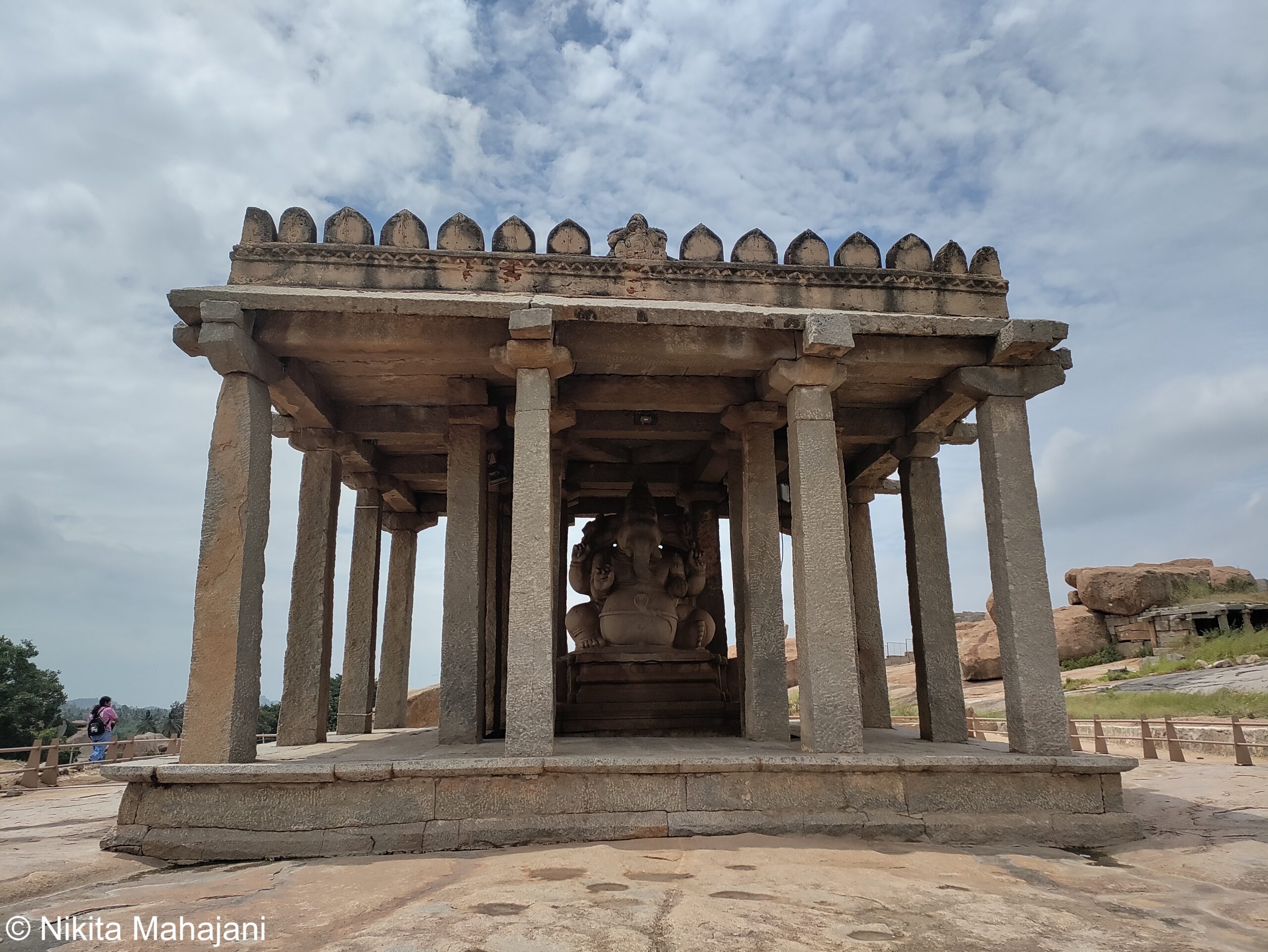
This hill is also the mythological site where Shiva incinerated Kama, the god of desire, with his third eye after Kama disrupted his meditation. Later, at Rathi’s request, Shiva revived Kama—but only in spirit, not in physical form.
You’ll often see couples, families, and solo travelers gathered here, watching the fading sun paint the sky in soft hues. It’s a peaceful and poetic way to end your Hampi journey—truly a must-visit spot to wrap up your experience.
We a sumptuous lunch at Hampi Paradise. We had a north Indian Thali and a south Indian thali. He allowed our pet on request. Parking was available in the adjacent lane.
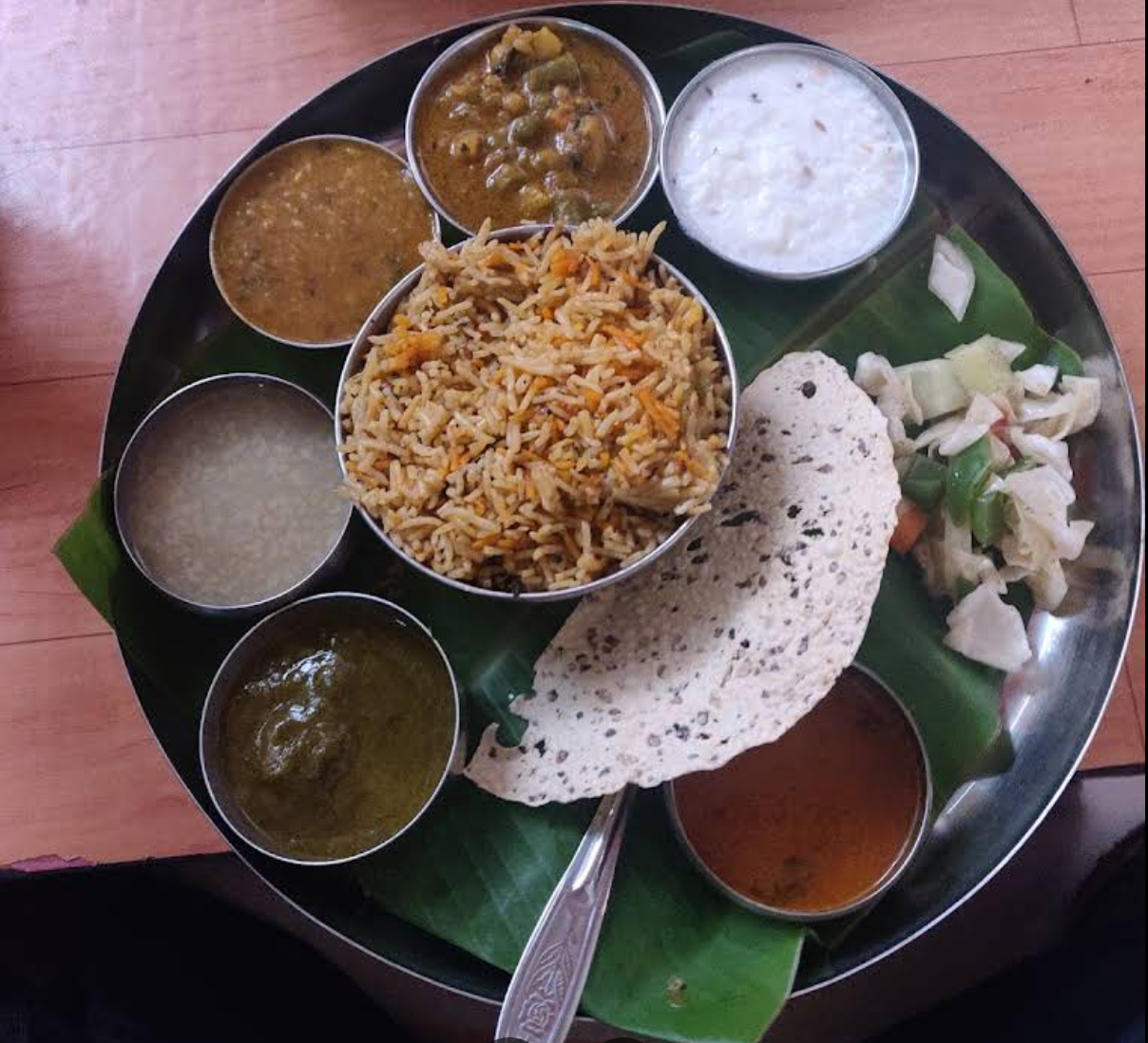
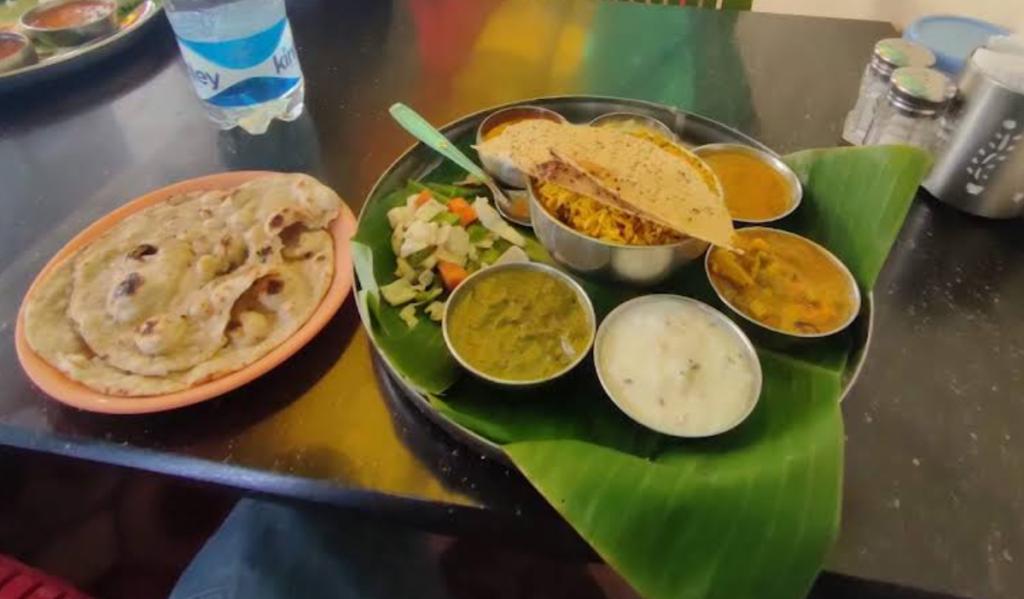
Post lunch , we continued to see the Kadalekalu Ganesha, Saasivekaalu Ganesha, and the picturesque Krishna Santhebidi Pond.
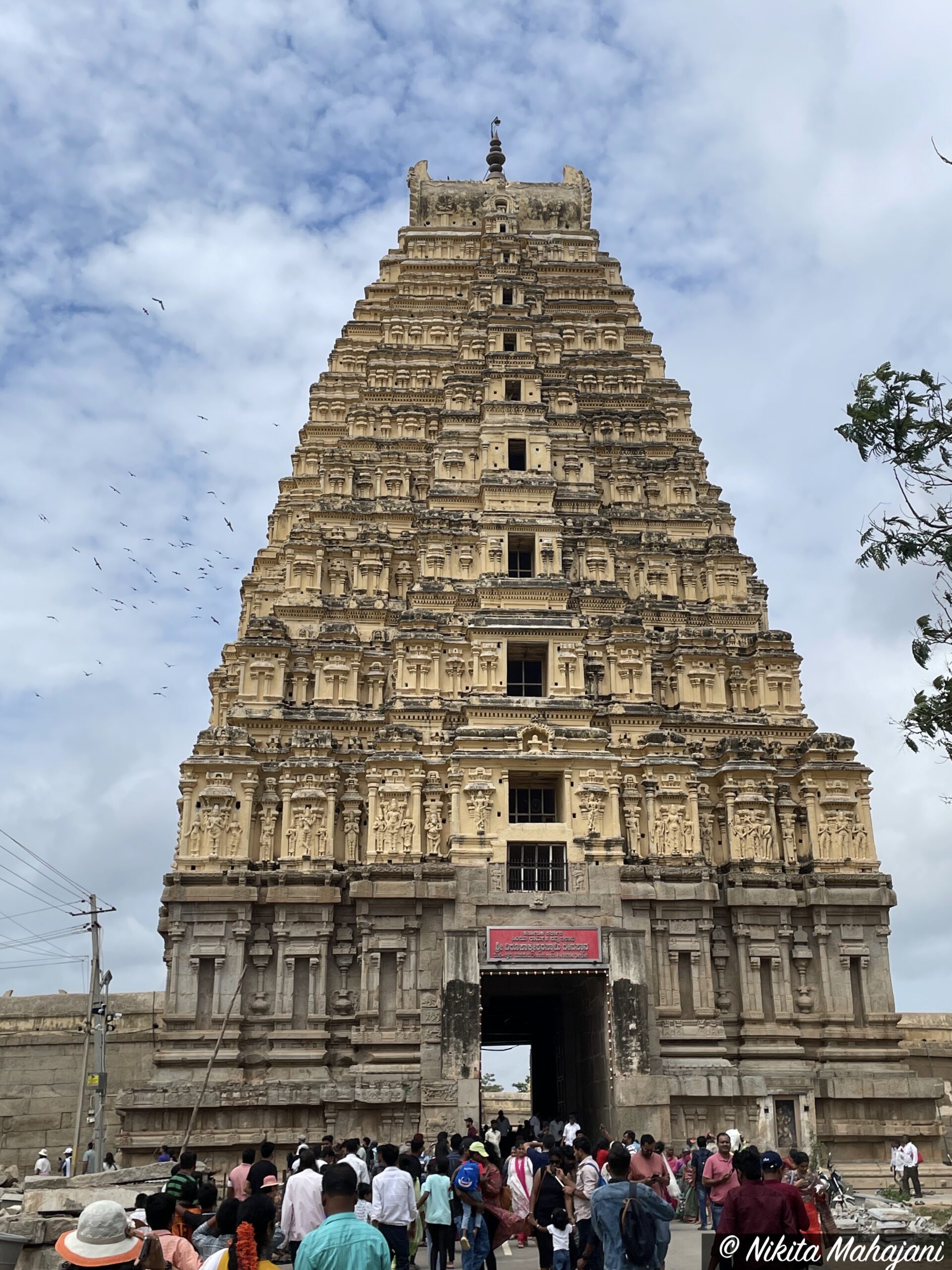
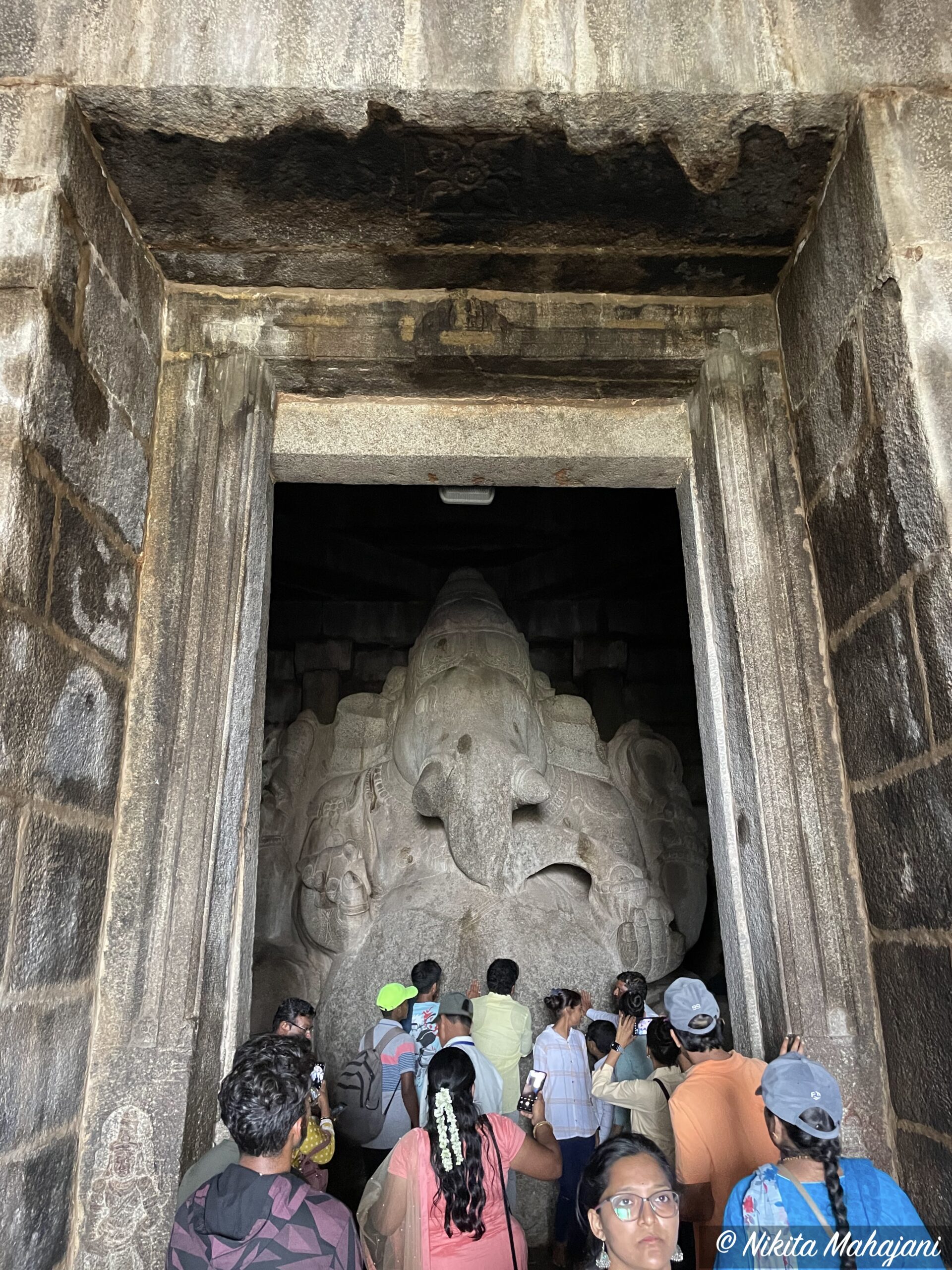
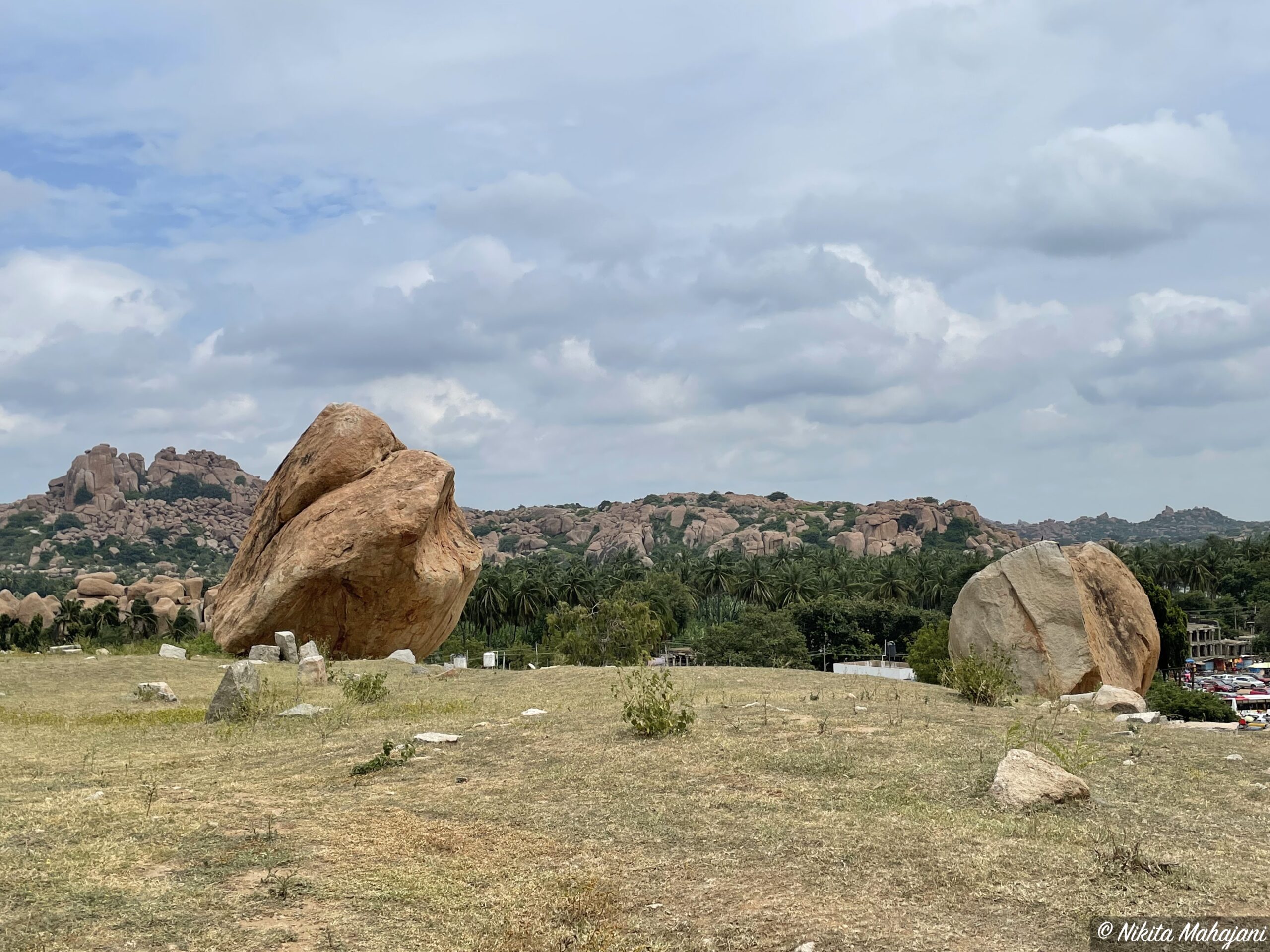
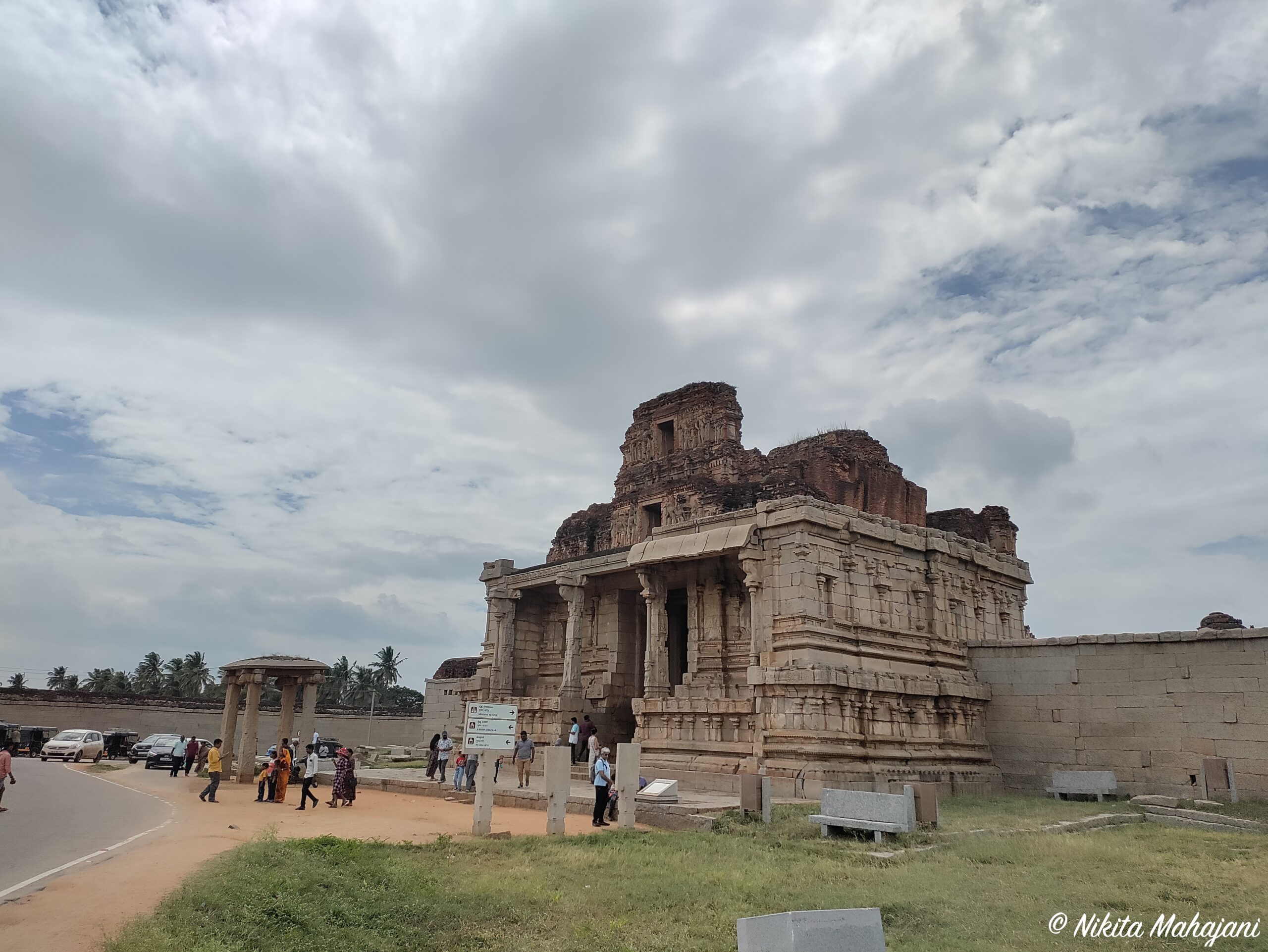
After visiting most of the temples on Hemakuta hill, we drove to Vijaya Vitthala Temple which is famous for its stone chariot and musical pillars.
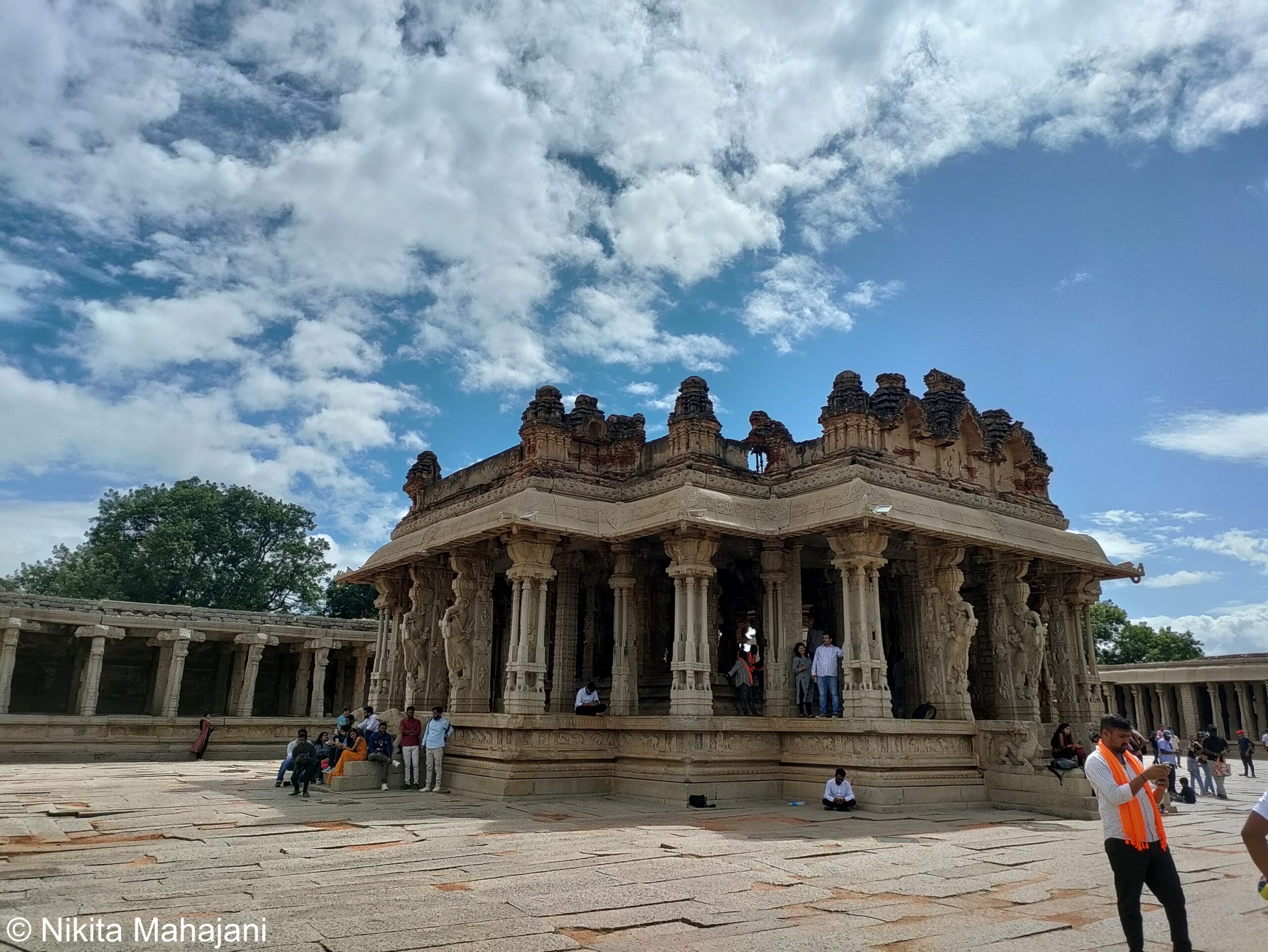
The parking area here is quite spacious, and there’s a convenient cafeteria nearby where you can grab some refreshments before heading out. Though electric vehicles are available to take you to the monument, I’d highly recommend walking the short 800m to 1km route. It takes you through Hampi’s charming old market street, where you’ll find block-printed shirts, hats, and quirky accessories at very reasonable prices.
After purchasing your entry tickets, be prepared for a bit of a wait if you’re opting for the electric vehicle—there’s usually a long queue. Private cars aren’t allowed beyond a certain point, so these electric shuttles (₹20 per person, each way) are the only way to reach the temple entrance. Do keep an eye out for monkeys near the ticket counter—they’re known for being a bit cheeky!
We brought our pet along and took her in the electric auto, which took around 10 minutes to reach the iconic Vijay Vitthala Temple. However, pets aren’t allowed past the auto drop-off point. So, I waited with her under the shade of a nearby ruined structure near the watchman, while my husband explored the temple.
One truly inspiring highlight of the experience? All the electric vehicle drivers were women—an empowering and commendable initiative!
The temple and its legacy are awe-inspiring. It’s astonishing how little we’re taught in school about the grandeur of this once-thriving empire. A visit here is a must, especially between November and February when the weather is pleasant. If you’re visiting between March and August, come prepared—with sunscreen, a wide-brimmed hat, and plenty of water, as the sun gets intense after 10 a.m. For a richer experience, hiring a government-certified guide is highly recommended!
The entire complex consists of Kalyana Mantapa, outer Mantapa, East Gate of Vitthala Temple, The Stone Chariot, Shree Vijaya Vitthala Temple, Sri Vishnu Gudi, King’s Balance, Vitthala Santhebedi, Sri Bhashyakara (Ramanuja) Gudi and Haleya Mantapa.
The Stone Chariot at Hampi is a breathtaking masterpiece of ancient architecture and craftsmanship. It’s one of India’s most iconic monuments and a must-visit, especially since it’s the very same structure featured on the ₹50 currency note.
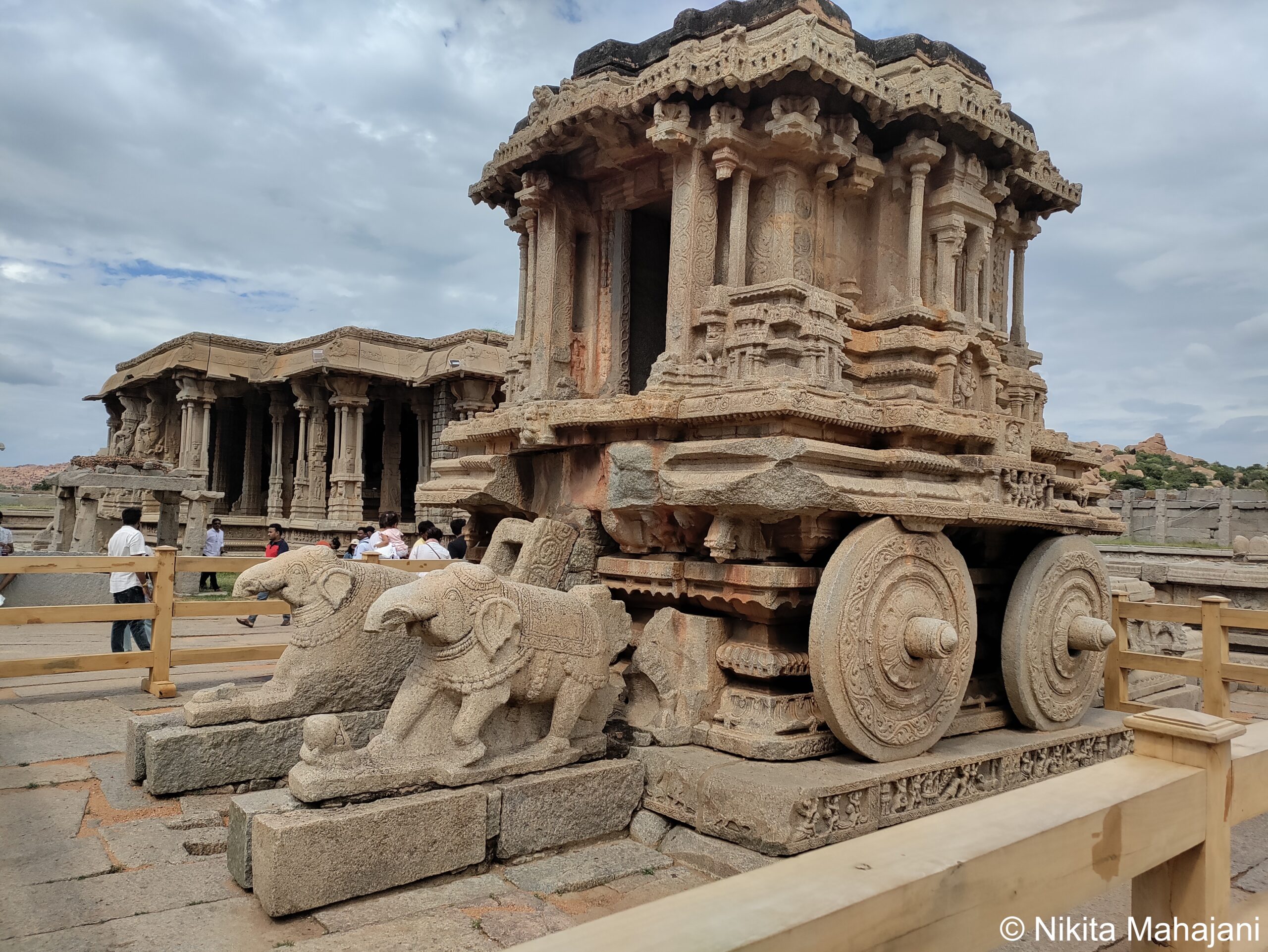
Located within the Vijaya Vitthala Temple complex, the chariot is just one of many wonders here. Don’t miss the legendary musical pillars of the temple—each carved column emits distinct musical notes when gently tapped, showcasing the genius of Vijayanagara artisans.
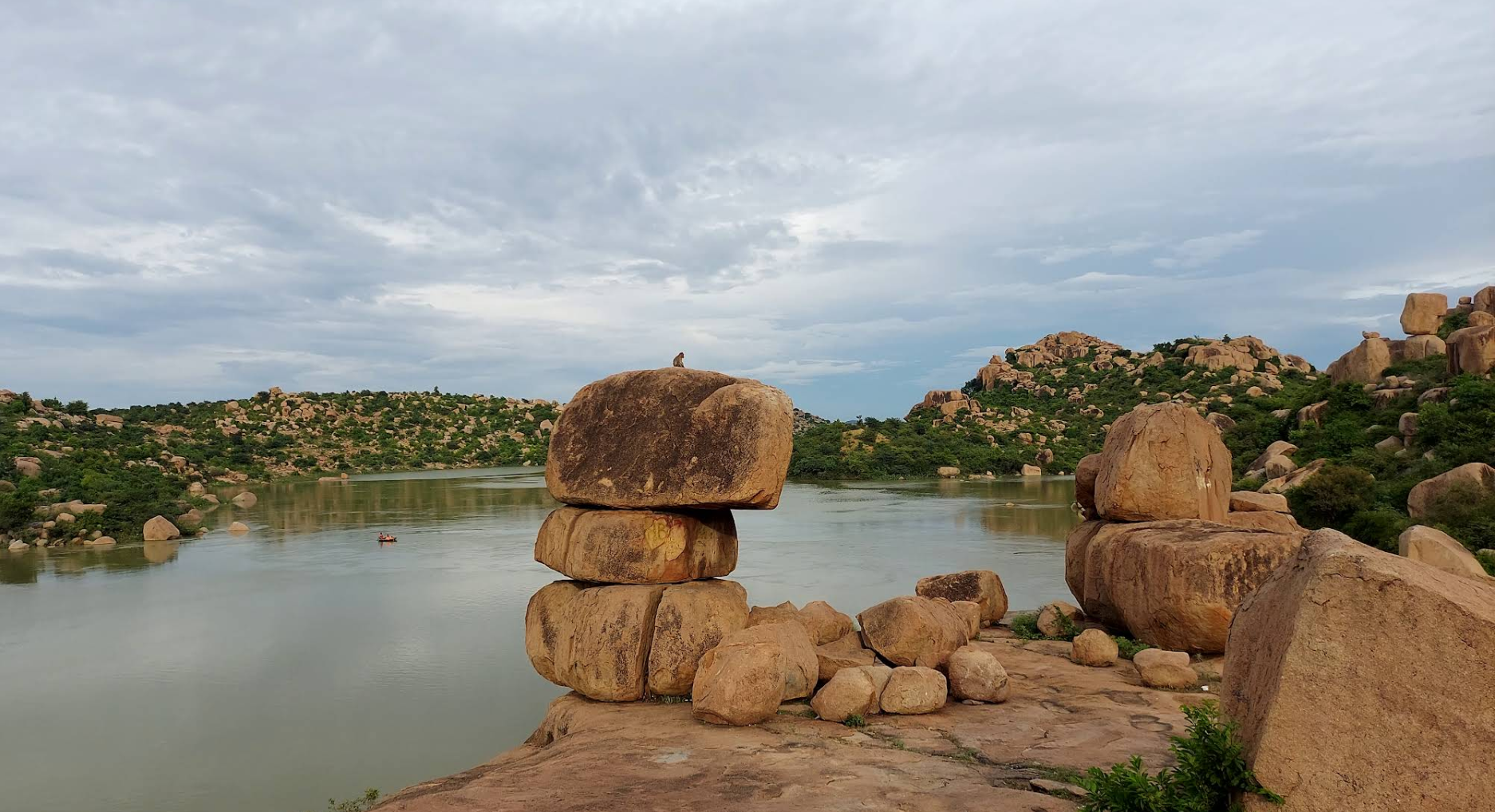
Our day concluded with a coracle ride in Sanapur Lake as the sun dipped below the horizon, casting a golden glow on the serene water—an idyllic end to a day filled with history and adventure. Our pet also enjoyed the coracle ride. The road to Sanapur lake is quite narrow. While coming back from Sanapur lake, we got stuck on the same single lane road since some vehicles came from the opposite direction. So many cars (including us) had to drive in reverse on the narrow ghat kind of road which was quite dangerous.
To read the next blog on Hampi-Badami Day-5 click here
Where did we eat ?
Hotel Sadguru pure veg, Wadhe, Pune-Satara road
Amar Only veg, Karnataka
Sri Veerabhadreshwar Lingayat Khanavali
Special Tea & Coffee, Hampi
Hampi Paradise, Hampi
A1 Hotel Raj, Hubballi
Udupi Grand Family restaurant, Nipani
Hotel Sadguru, Satara
Where did we stay ?
Hotel Badami Court
Goan corner / Zostel Gangavathi
Orchard Resort, Belagavi
